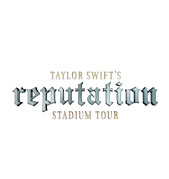NFTs Aren’t Stupid
Imagine a world in which you could purchase a simple digital image, and the ownership of that image magically unlocked a world of known (and potentially unknown) experiences.
In certain circles, including my friend group, there have been a multitude of heated discussions about NFTs. My wife just told me that NFTs are stupid, so before you lock into that thought, I encourage you to give the rest of this article a chance.
If you have been paying attention to the NFT craze, then skip down to my dream scenario (and call me so we can rap about your thoughts on this topic). For everyone else asking themselves, “What in the hell is a non-fungible token (NFT)?”, just know that it is hard to describe and even harder to wrap your head around. However, there is no doubt they will become a part of your life moving forward. Fortunately, there have been a handful of people like Gary Vaynerchuk that have written articles trying to explain NFTs to their community (check out his latest blog).
Wikipedia describes an NFT as this:
A non-fungible token (NFT) is a unit of data stored on a digital ledger, called a blockchain, that certifies a digital asset to be unique and therefore not interchangeable. NFTs can be used to represent items such as photos, videos, audio, and other types of digital files. Access to any copy of the original file, however, is not restricted to the buyer of the NFT. While copies of these digital items are available for anyone to obtain, NFTs are tracked on blockchains to provide the owner with a proof of ownership that is separate from copyright.
Still confused? Let me give it a try…
Verlatti-pedia:
A non-fungible token (NFT) is a unique digital asset that only authenticated owners of the asset can have. NFTs can look like a photo, video, audio, or other type of digital file, but they all come with an unchangeable smart contract that can also give the owner access to things in the real world. These digital assets are minted (made) as a known quantity, so prior to purchase, the owner can be guaranteed as to the rarity of their collectable.

There is no denying that people like to collect things: Jay Leno collects cars, John Mayer collects watches, and you might collect speeding tickets. Regardless of your collecting habits, the idea of a digital collectable might be a new concept to you (unless you are a gamer that has been collecting skins for your virtual avatar).
Let’s think about a digital asset that most of us would like to collect. If you are a Twitter user (give me a follow @Verlatti), you have likely seen the blue checkmark that helps verify authentic accounts from celebrities, brands, and other organizations. What if you could win or buy that mark, and Twitter only issued 10k of them to normal people like you and me? Would you want one? Would you proudly display it on your Twitter profile as a flex? NFTs are the same thing.
Now let’s think about the smart contract side of the equation. What if the coolest club in LA only let people in that had a blue checkmark? Do you think the resale of that simple mark would increase or decrease as people found out about how tasty the cocktails were, how sexy the patrons were, or how exclusive the access was in that club?
Now that you understand the general premise behind the NFT, and hopefully no longer think it’s stupid (it took me a while to convince Kelly), I want you to daydream with me about how we could roll out an NFT to a sports league. Not a copy of the NBA Topshot (see article), but a unique asset that is designed to create long-term value for the league and the NFT owner in both the digital and physical worlds.

For fun, let’s pretend that I was the CMO of Indy Car. Immediately after getting my employee badge and taking hot laps around the Indianapolis Motor Speedway, I would deploy an NFT project with the sole purpose of building community amongst Indy Car fans.
- First Project – Every event ticket issued throughout the season would also come with a digital copy for fans to collect.
- I believe that fans will proudly display these digital mementos over time on their social channels and public wallets (a wallet is a place to store your NFT; these will likely become integrated into your favorite social media platforms in the next 6-12 months).
- Season ticket holders would be issued a unique NFT that would enable them to access a VIP lounge at the race and discounts in the concession area.
- Fans that collected multiple digital tickets throughout the season would be rewarded for their loyalty by receiving Cameo-style personalized thank you messages from Indy Car drivers.
- Guests that collected every digital ticket from the season would be invited to an Indy 500 VIP event the following season.
- Second Project – I would release 112 Indy 500 NFTs celebrating each year the race has been run. This limited-edition collectible would also come with its own list of VIP perks:
- NFT holders would be invited to a private meet-and-greet each year with the Indy Car Series driver (if living) that won the race on their NFT.
- Each year, we would presell that year’s NFT in the days leading up to the race. NFT holders would then be invited to the Indy 500 Champions breakfast the day after the 500.
- Third Project – Limited edition NFTs would be minted and distributed throughout the year and made available to Indy Car Series official partners to gift during their at-track activations. These NFT holders would then be entered into a yearly drawing to ride in the pace car during the championship event as a guest of Indy Car.
- Because these smart contracts included the official partners, there would also be a reward structure tied to those brands (Think Willy Wonka’s Golden Ticket).
The world of NFTs is in its infancy, but I hope this illustrates that the adoption of NFTs could open up a world of fan loyalty that was previously unavailable to marketers. It might be enough for a casual fan to share their digital snake pit ticket proving that they were there in person, but for more avid fans of the brand, it could open up an entirely new world of collectibles where holders want one of every card in a series.
It’s important to note that there are two things creating measurable value over time:
- Rarity of the collectable.
- The real-world experience associated with the asset.
You want NFT owners to brag about how awesome the fireside chat with AJ Foyt was, and how they want to trade their 1964 Indy 500 NFT for a 1963 Indy 500 NFT so they can meet Parnelli Jones in person.

This exercise was aimed at getting marketers to stop thinking about NFTs as a JPEG that only their avid fans might collect (alongside their diecast & tire shrine), but as an asset that will create community amongst like-minded individuals and has the ability to generate a return of value over time for both the NFT holders and the leagues.
Let me know if you think you are ready to enter into the NFT game, or if you still think these JPEGs are stupid,
Michael











